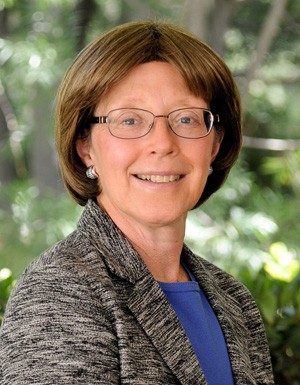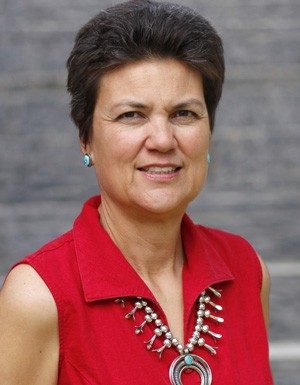CPT Profiles: Kerry Karukstis & Jani Ingram
By Sarah Derouin for the American Chemical Society
Giving Undergraduates Great Research Experiences
The members of the Committee on Professional Training (CPT) are constantly striving to incorporate the latest advancements in chemistry to their program approval work. To best represent the field, CPT members come from a variety of professional backgrounds: both large and small academic institutions, industry, and government research agencies.
But preparing chemists for the workforce is more than providing a check list of chemistry content. A large part of that preparation is to hone critical-thinking, problem-solving skills, and resiliency—all skills that can be practiced through research experiences.
Incoming chairperson Kerry Karukstis, Ph.D. and new member Jani Ingram, Ph.D. are committed to helping departments create strong undergraduate research opportunities, and help guide departments to continually reflect and improve their programs.
Helping Undergraduates Succeed
Kerry Karukstis, Ph.D. is no stranger to undergraduate education. She has spent the last 37 years teaching at Harvey Mudd College in Claremont, California and has been a member of CPT for nine years. She notes that years before becoming a CPT member, she was active in CUR, or the Council on Undergraduate Research, including acting as president of the organization. Today, Karukstis continues to work with colleagues from CUR on NSF-funded work, helping institutions revise their curricula to incorporate research and research skill-building.
Curriculum revision requires a clear understanding of different departments, and creating strategies that work in best those environments. Karukstis notes that her institution is focused on science and engineering, but working with CPT allows her to get a glimpse into how other departments work and the challenges they face.
“I particularly like seeing the landscape of chemistry programs across the country,” says Karukstis. “It opens your eyes to the kinds of issues faculty are facing, and gives you a wider viewpoint.” Karukstis says that being on CPT is “a way to have a broader impact on a range of institutions beyond my own.”
New CPT member Jani Ingram, Ph.D., associate professor at Northern Arizona University, is also focused on the success of undergraduates. In particular, she understands the challenges some students face— especially those transferring from 2-year colleges into 4-year institutions.
Ingram is the director of the NAU Bridges, a Bridges to the Baccalaureate Program. Bridges is a program funded by the National Institute of General Medical Sciences (NIGMS) and supports students who are transferring from a community college institution to a 4-year college or university. At NAU, Ingram says Bridges focuses on Native American students interested in pursuing biomedical or behavioral sciences degrees.
“Part of the reason I was really interested in Bridges, [is] that was my path,” says Ingram. She transferred from a 2-year college to a 4-year, and along the way, she found her career calling. “I mean, it's why I'm a chemist—I had a really good chemistry instructor at the community college.” After receiving her doctorate, Ingram worked at the Idaho National Laboratory for 12 years before becoming a faculty member at NAU.
The Power of Undergraduate Research
Both Karukstis and Ingram are champions for undergraduate research. They view it as a way to not only train students for future careers but to also to broaden their critical thinking and problem solving skills.
“We've recognized that the kinds of skills chemistry graduates need to thrive in either graduate school or in their various occupations is not just an emphasis on the content of chemistry courses,” says Karukstis.
She adds that students also need to develop professional skills and to see the importance of interdisciplinary work—and research is a great way to do that. “It is an opportunity for building both written and oral communication skills, for helping students to develop as team members and team leaders, safety skills, and lots of different kinds of problem solving skills,” explains Karukstis.
Ingram agrees and adds that research experiences help students think beyond the classroom.
“It helps students to start thinking critically, instead of just taking a class, regurgitating those facts, and moving on,” she says.
But research can also reveal hidden skills or deficiencies as well. “It's also important for students to see if they'll have the resilience to complete a research program, because things [in the laboratory] don't work all the time,” says Ingram.
Ingram, who is a member of the Navajo Nation, says she noticed that students who grew up on reservations have a particular resilience when things go wrong in the lab. “They are used to having things break and having to fix them or to troubleshoot things,” she explains, adding that they grew up with a different skill set.
Karukstis says it’s important to start research experiences early in the curriculum, so that by the time a senior undertakes a capstone project, they have the skills they need for success. She says students are often eager to get in the lab. “At my institution—and I think it's very common across the country—students walk in the door and want to get started in research,” she says.
Aspirational Goalsetting
Being a member of CPT means consistently looking for ways departments can improve, and creating the tools to help them succeed.
“I'm particularly proud of the direction we're moving in with our next guideline revisions,” says Karukstis. “One of the things that we're doing is not only articulating the minimum requirements for ACS approval, but also trying to state some of the features or aspects of truly outstanding programs to give all institutions something to aspire to.”
An example of these aspirational goals could include introducing students to modern laboratory record keeping tools, like electronic laboratory notebooks. Karukstis understands that not all universities will want to invest in that particular training, but doing so would be a “marker of excellence.”
Karukstis sees these aspirational goals as a way to improve all departments. “The ones for whom the ACS requirements are a breeze will now see that there are new ways to improve their program,” she notes.
Helping departments reach their goals also means giving them the tools and resources they need. Ingram notes that it means thinking about world issues—considering the pandemic and social justice movement that’s taken place over the past year, it’s crucial to provide guidance to chemistry departments. “It's one thing to say “You need to do this,’ but you have to guide people and give them resources,” to reach their particular diversity goals, says Ingram.
It seems that CPT is a good model for representation. “I feel like the committee is very diverse in terms of the types of institutions they represent,” says Ingram. She says from industry, racial backgrounds, types of chemists, and stages of career, CPT is a diverse group.
I'm particularly proud of the direction we're moving in with our next guideline revisions,” says Karukstis. “One of the things that we're doing is not only articulating the minimum requirements for ACS approval, but also trying to state some of the features or aspects of truly outstanding programs to give all institutions something to aspire to."



